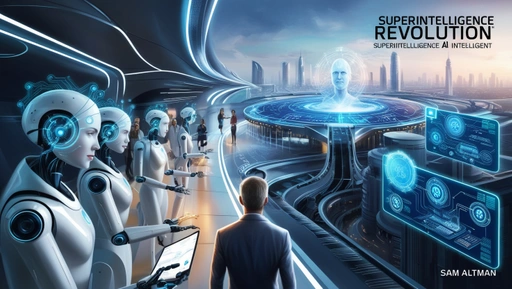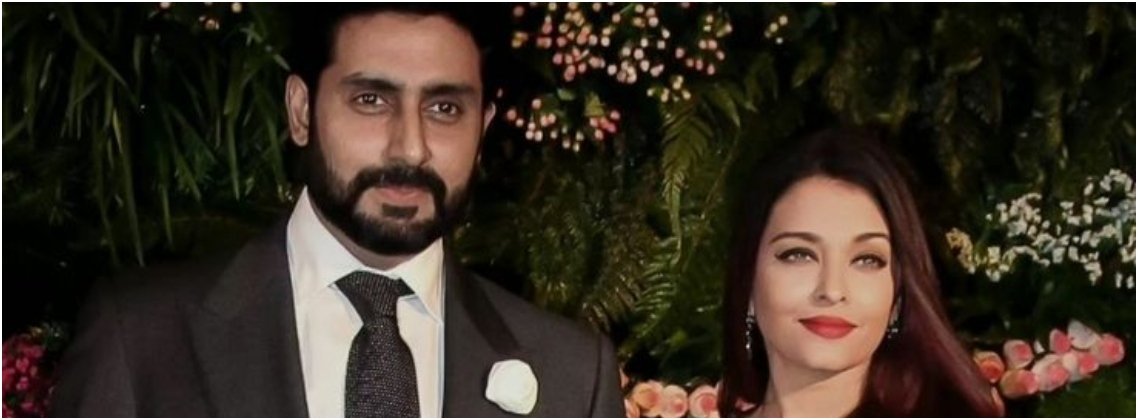Bangladesh Political Crisis Deepens: Hasina Verdict Sparks Unrest, Economic Collapse, and Rise of Radical Forces
Bangladesh Political Crisis 2025- As Dhaka braces for a verdict that could define its future, Bangladesh finds itself trapped in a perfect storm of political vengeance, economic free-fall, and rising religious extremism.
On 17 November, the International Crimes Tribunal (ICT) in Dhaka is due to deliver its judgement in a “crimes against humanity” case against ousted Prime Minister Sheikh Hasina, tried in absentia for allegedly ordering a brutal crackdown on student-led protests in mid-2024.
The capital has effectively been put under a rolling lockdown: Awami League supporters have called nationwide shutdowns, buses have been torched, crude bombs have exploded across the city and beyond, and the government has flooded Dhaka with army troops, Border Guard Bangladesh (BGB) and Rapid Action Battalion (RAB) patrols, checkpoints and riot police.
At the centre of this Bangladesh Political Crisis stands Nobel laureate Muhammad Yunus, head of the interim government that replaced Hasina after the 2024 “Monsoon Revolution”. To his critics — particularly within the banned Awami League — Yunus is not a neutral caretaker but the face of an “illegitimate occupation of power”: a non-elected leader backed by sections of the military and student protesters, ruling via presidential decrees and emergency powers rather than a parliamentary mandate.
The upcoming verdict in the extrajudicial killings case against Hasina, which includes incidents like the Ashulia immolation killings, where six bodies were burned on a police van during the final day of the July 2024 uprising, has become a lightning rod for much deeper anxieties:
Is Bangladesh still on a democratic path, or sliding into a managed, security-state order that empowers radicals and punishes secular voices?
From “Monsoon Revolution” to managed transition
The current turmoil cannot be understood without revisiting the dramatic events of July–August 2024.
What began as student protests against a discriminatory job-quota system escalated into a nationwide uprising. Human Rights Watch and the UN human-rights office have since documented extensive abuses, including the use of live fire on protesters, mass detentions and the killing of civilians, allegedly with the direct approval of Hasina and senior security officials.
Hasina fled to India on 5 August 2024, aboard a military aircraft, as parts of the security forces and administration peeled away. Within weeks, a military-backed interim government was formed with Muhammad Yunus as chief adviser. He promised:
- A reset of democratic institutions
- A “clean-up” of corruption and crony capitalism
- New elections by late 2025 or early–mid 2026
But more than a year later, Bangladesh is still under interim rule. The Awami League has been formally banned under the Anti-Terrorism Act, and all its activities have been suspended until special tribunals conclude trials against the party and its leaders.
This has raised serious questions:
- Can an election where the dominant party of the last 15 years is outlawed be called free and fair?
- Is the ICT genuinely seeking accountability for atrocities — or delivering what Awami supporters call “victor’s justice”?
Even some who opposed Hasina’s increasingly authoritarian style now fear a new concentration of power — only this time in unelected hands.
A trial that divides the nation

The case against Sheikh Hasina is politically explosive.
Prosecutors accuse her of being the “mastermind and principal architect” behind a systematic campaign of state violence during the 2024 protests, with charges including murder, torture, extermination and other inhumane acts. UN estimates suggest up to 1,400 people may have been killed between July and August 2024 in the crackdown and associated unrest.
The ICT’s hearings — 28 days of testimony from dozens of witnesses — concluded in October; the bench then fixed 17 November as verdict day. Prosecutors have reportedly sought the death penalty for Hasina.
From exile in India, Hasina has counter-attacked: in interviews, she has described the proceedings as a “political witch-hunt”, insisted she would like to return home “only if Bangladesh first holds free, fair and participatory elections”, and accused Yunus of failing to protect minorities and presiding over a vendetta against Awami supporters.
A special tribunal has even banned Bangladeshi media from broadcasting or publishing her speeches, arguing they could influence witnesses or undermine the trials.
For critics of the interim regime, this is proof that the process is stacked; for Yunus’s supporters, it is overdue accountability for a leader they say turned the state’s security apparatus into a personal weapon.
Democracy shrinks, fear grows
If the 2024 protests exposed the excesses of Hasina’s rule, the period after her fall has highlighted the dangers of a prolonged, extra-constitutional transition.
Rights monitor Odhikar reports that since Hasina’s ouster, at least 281 people have been killed in politically linked violence, 40 in extrajudicial killings and over 150 lynched, with security forces blamed for a significant share of the deaths. Al Jazeera and other outlets have documented continuing unlawful killings and disappearances under the Yunus government, arguing that the playbook of impunity has outlived the previous regime.
Meanwhile:
- The Awami League is outlawed and unable to organise openly.
- Student activists who once led the revolution now complain of surveillance and selective arrests.
- Civil society groups allege that terrorism and sedition laws are being deployed to criminalise dissent from both left and right.
In interviews with international media, Hasina has framed this as a “hijack” of the democratic movement, arguing that Bangladesh “can’t and won’t remain in this state” and must “rise again” through genuine elections and the restoration of its secular, constitutional order.
Secular fabric frays as radicals surge
One of the most disturbing shifts since Hasina’s exit has been the sharp rise in attacks on religious minorities, especially Hindus.
- The Bangladesh Hindu Buddhist Christian Unity Council documented 2,010 incidents of communal violence between 4–20 August 2024 alone, including attacks on homes, businesses and temples.
- A later tally claimed 2,442 hate crimes against minorities between August 2024 and June 2025, including killings, sexual assaults and desecration of places of worship.
The interim government has disputed some figures and stressed that many attacks were politically, not purely religiously, motivated. But for those on the receiving end, the distinction is academic.
Al Jazeera’s reporting from minority neighbourhoods describes Hindu families saying bluntly, “Our lives don’t matter in post-Hasina Bangladesh,” contrasting their relative sense of security under Awami rule with the fear and uncertainty of the present.
At the same time, Islamist forces are resurgent:
- The once-banned Jamaat-e-Islami has rebuilt its networks and is pressing for greater say in the coming constitutional settlement.
- Thousands of Islamists recently rallied in Dhaka, demanding a referendum on the “July National Charter” — a framework proposed by the Yunus government that would reshape the political system before elections.
Human-rights advocates warn that Yunus, eager to keep the streets calm and isolate Awami loyalists, has not forcefully confronted growing fundamentalism, inadvertently allowing radical currents to seep deeper into the mainstream.
The cumulative effect is a visible erosion of Bangladesh’s secular ethos: more veiled women facing harassment if they appear “too modern”, Sufi shrines vandalised, and Hindu neighbourhoods living with the constant threat of mob attacks.
Economic unravelling: from garment powerhouse to fragile economy
Bangladesh Political Crisis is not only political. It is starkly material.
Hunger and food insecurity
Multiple assessments paint a grim picture:
- An IPC (Integrated Food Security Phase Classification) analysis found that about 15.5 million people — roughly 16% of the analysed population — were in acute food insecurity (IPC Phase 3 or worse) in April 2025.
- The World Food Programme and government partners estimate around 16 million Bangladeshis now face severe levels of food insecurity, with 1.6 million children acutely malnourished.
- Longer-term analyses of “Hunger in Bangladesh” have warned that up to 40% of the population has historically fallen into categories of hunger, starvation or chronic hunger — a vulnerability now brutally exposed by political chaos and inflation.
While the user’s figure of “40% of the population affected” reflects this broader vulnerability, the best current hard data suggests that about one in six Bangladeshis is already in acute Bangladesh Political Crisis, with many more on the edge as food prices soar.
Garment industry under siege
The ready-made garment (RMG) sector — the backbone of the Bangladeshi economy, employing about 4 million workers and generating over $40 billion in export earnings annually— has been battered on several fronts:
- Protests and violence in August 2024 forced mass factory closures, with production reportedly falling by around 50% at the time.
- Industrial police data cited by researchers shows over 100 units closed between August 2024 and May 2025, resulting in about 60,000 workers losing their jobs; broader estimates speak of up to 2.1 million jobs lost in the second half of 2024.
- More recent reports speak of 353 garment factories shut and 125,000 workers jobless, as rising costs, cancelled orders and chronic unrest push manufacturers under.
- In October 2025, a massive fire at Dhaka airport’s cargo complex destroyed stored materials and ready-to-ship garments, deepening export disruptions during peak season.
A pro-Awami analysis claims GDP growth has slumped from 6.1% in 2023 to about 2.3% in 2025, with foreign reserves nearly halved and youth unemployment above 25%. Awami League Independent verification of those exact figures is still emerging, but there is a broad consensus that Bangladesh is in its deepest economic funk in over a decade.
For millions of ordinary citizens, the verdict on the interim regime is already in: regime change has not brought stability or prosperity, but deeper turmoil and daily insecurity.
Dhaka under lockdown: a city ruled by uniforms
In the days leading up to the 17 November verdict, Dhaka has offered a glimpse of what a capital under siege looks like:
- Awami League calls for a countrywide “lockdown” to protest the trial, which has emptied streets, disrupted bus services and triggered clashes and arson in multiple districts.
- Authorities have responded by deploying army units, BGB platoons and RAB teams, setting up checkpoints at major intersections and key government sites.
- Schools and universities in Dhaka have shifted to online classes; citizens describe near-military control around the tribunal complex, with heavily armed troops and armoured vehicles visible across central neighbourhoods.
International observers worry that policing by the army, rather than civilian law enforcement, risks normalising militarisation of politics — and raises the stakes if the verdict sparks further violence.
Security spillover: India watches nervously
Across the western border, India is watching with a mix of strategic anxiety and domestic anger.
New Delhi is already reeling from the 10 November car bombing near the Red Fort, officially confirmed as a terror attack and now linked by investigators to a Jaish-e-Mohammad–inspired “doctor module” stretching across several Indian states.
So far, there is no public evidence that the Red Fort blast was planned from Bangladeshi soil. Investigations point primarily to Pakistani handlers in Turkiye and Afghanistan and local radicalised professionals.
However, Indian intelligence has repeatedly warned that Pakistan-based terror outfits might seek to use Bangladesh as an alternate launchpad, exploiting porous borders and political instability. TV debates and security commentaries have already begun “joining the dots” between:
- Rising jihadi activity in the region,
- The vacuum in Bangladesh’s security architecture, and
- The possibility of cross-border facilitation for attacks on Indian targets.
If the Hasina verdict triggers prolonged chaos, the risk of radical outfits exploiting the disorder — whether to recruit, smuggle arms or coordinate logistics — will rise sharply. That, in turn, could harden Indian domestic politics and border management in ways that further complicate Dhaka–Delhi relations.
What’s next for the Bangladesh Political Crisis?
Several scenarios loom as 17 November approaches:
- Conviction with a death sentence
- Would likely trigger massive protests by Awami supporters and deepen international concern over due process and the politicisation of the ICT.
- Could push Yunus to double down on repression, further shrinking democratic space.
- Conviction with life imprisonment or a long sentence
- Might still be seen as “victor’s justice”, but could give the interim government some room to argue that it pursued accountability without the ultimate penalty.
- Protests would still be intense, but perhaps more contained.
- Acquittal or hung verdict
- Politically, the least likely, given months of strong prosecutorial narrative and the Tribunal’s own prior stance.
- Would dramatically strengthen Hasina’s moral authority in exile and complicate Yunus’s hold on power.
- Delay on security grounds
- A postponement would likely signal that even the interim authorities fear the consequences of their own process — and could prolong Bangladesh’s limbo, feeding both economic decline and radicalisation.
In all cases, the core structural dilemmas remain:
- A banned ruling party with deep roots and a powerful exile leadership.
- An interim government with questionable constitutional grounding and eroding public confidence.
- A fractured security apparatus accused of abuses under both the old and new regimes.
- A society polarised along partisan, urban–rural and now increasingly religious lines.
Hasina’s message and the battle for the future
From Delhi, Sheikh Hasina’s message has shifted from defiance to a broader appeal for “renewed commitment to democracy and national integrity”, warning that the current trajectory endangers both Bangladesh’s secular identity and its hard-won socio-economic gains.
Her opponents counter that it was precisely her authoritarian drift and lethal crackdown that set the stage for today’s Bangladesh Political Crisis. They argue that any sustainable future must include accountability for the July 2024 massacre and structural reform of the security sector.
In truth, both claims hold part of the reality:
- Hasina’s rule did slide into heavy-handed administration to protect the nation from radical elements, and the deaths of hundreds, perhaps a secret as to who ordered it, of protesters demand justice.
- But Yunus’s interim government has so far failed to stabilise the country or protect its secular, plural fabric, presiding instead over a surge in political and communal violence, economic distress and creeping radicalism.
As Dhaka wakes up on 17 November to hear the tribunal’s verdict, Bangladesh will not only be judging one leader’s past — it will be testing whether its revolution leads to renewal or a new, more volatile kind of captivity.
Bangladesh political crisis 2025, Sheikh Hasina verdict, Muhammad Yunus interim government, Bangladesh unrest, Dhaka lockdown news, Bangladesh Hindu minority attacks, Bangladesh economy collapse, Bangladesh garment industry crash, Bangladesh democracy crisis, Bangladesh extremism rise, Awami League crackdown, Bangladesh army rule, Dhaka protests today, Bangladesh jihadi groups
Discover more from
Subscribe to get the latest posts sent to your email.








2 COMMENTS